A Huge Problem – Prevented Planting Acres

Recently I was in Minnesota with Brad Hagen, T.J. Kartes, and Andrew Heath looking at Brad’s 1,000+ acres of cover crops.
Brad did not intend to plant any of these acres to cover crops in July 2013; he intended to plant them in August or early September.
But spring rains and floods kept Brad from planting corn or soybeans on most of his 1,700 acres near Ellendale, MN (about an hour SW of Rochester, MN ).
Brad attended a cover crop meeting TJ set up for me to speak at on behalf of Legacy Seeds last March – and as I spoke I could see Brad’s mind working. When the spring rains came so did phone calls from Brad to TJ and from TJ to Andrew or me (or both).
“What can I do to build soil during this disaster?” This was the theme of the weekly (if not daily) phone conversations.

Cover Crops to the Rescue!
Brad’s goals are to build soil, scavenge leftover nitrogen from his hog operation, and build nitrogen with legumes.
Realizing that we would plant in early-mid July and not in mid-late August, we all understood that we did not want to have to mow to remove seed heads if at all possible – so we left Radishes out of the mix.
We also realized that we wanted to use a “summer” clover, so we used Berseem Clover for its excellent growth and N-producing ability.
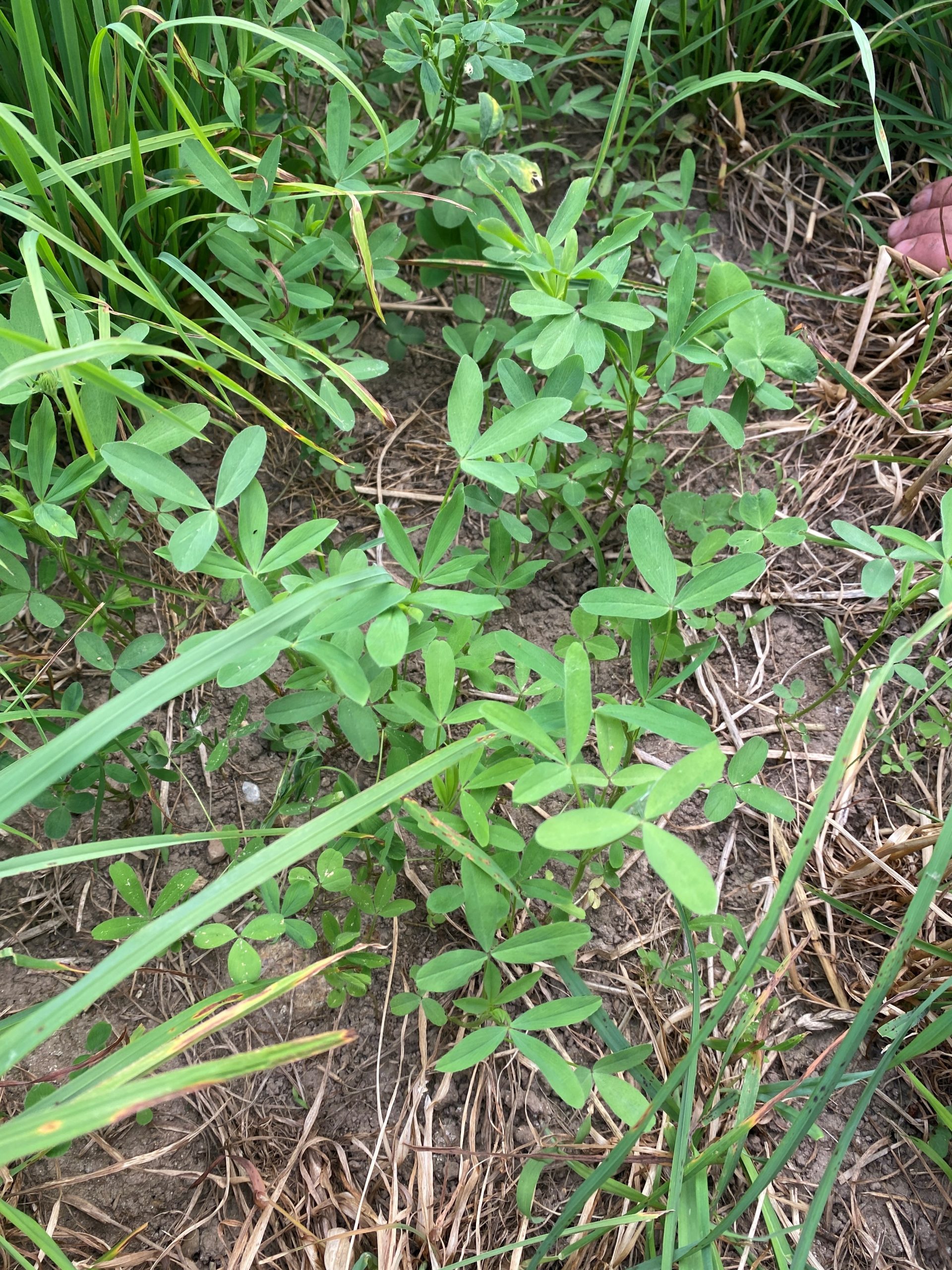
We chose Oats as the grass in most fields and then we added a twist, Pasja or Vivant Hybrid Brassica. I worked with Pasja for over 10 years and rarely ever saw it produce a seed head in the summer or fall.
While neither Pasja (nor Vivant) have a big tuber like a radish, they do scavenge a tremendous amount of nitrogen – and earthworms dwell around their roots.
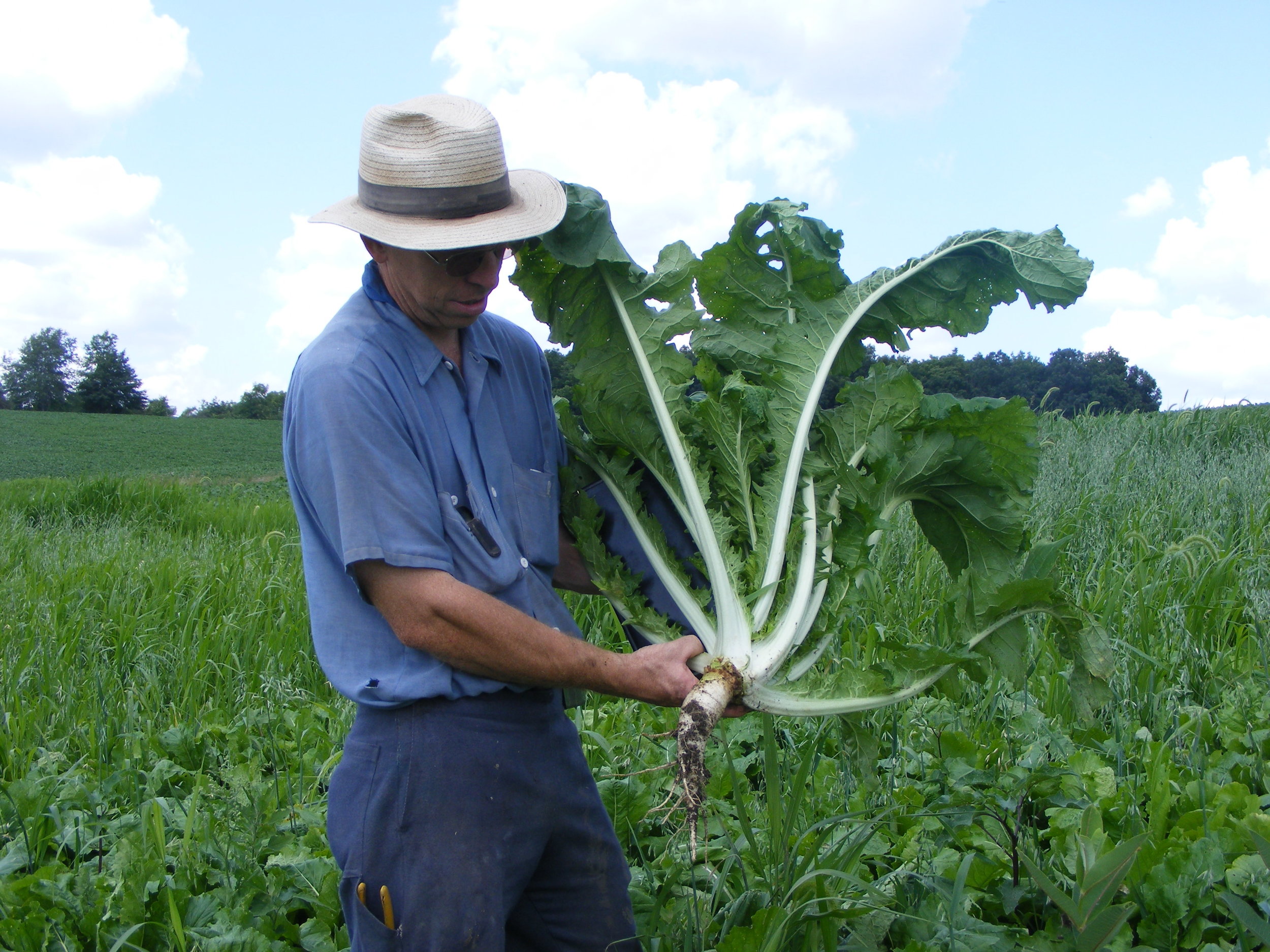
In some of the later July (and soon-to-be mid-August) planted fields, we chose spring barley and crimson clover, along with radishes and turnips.
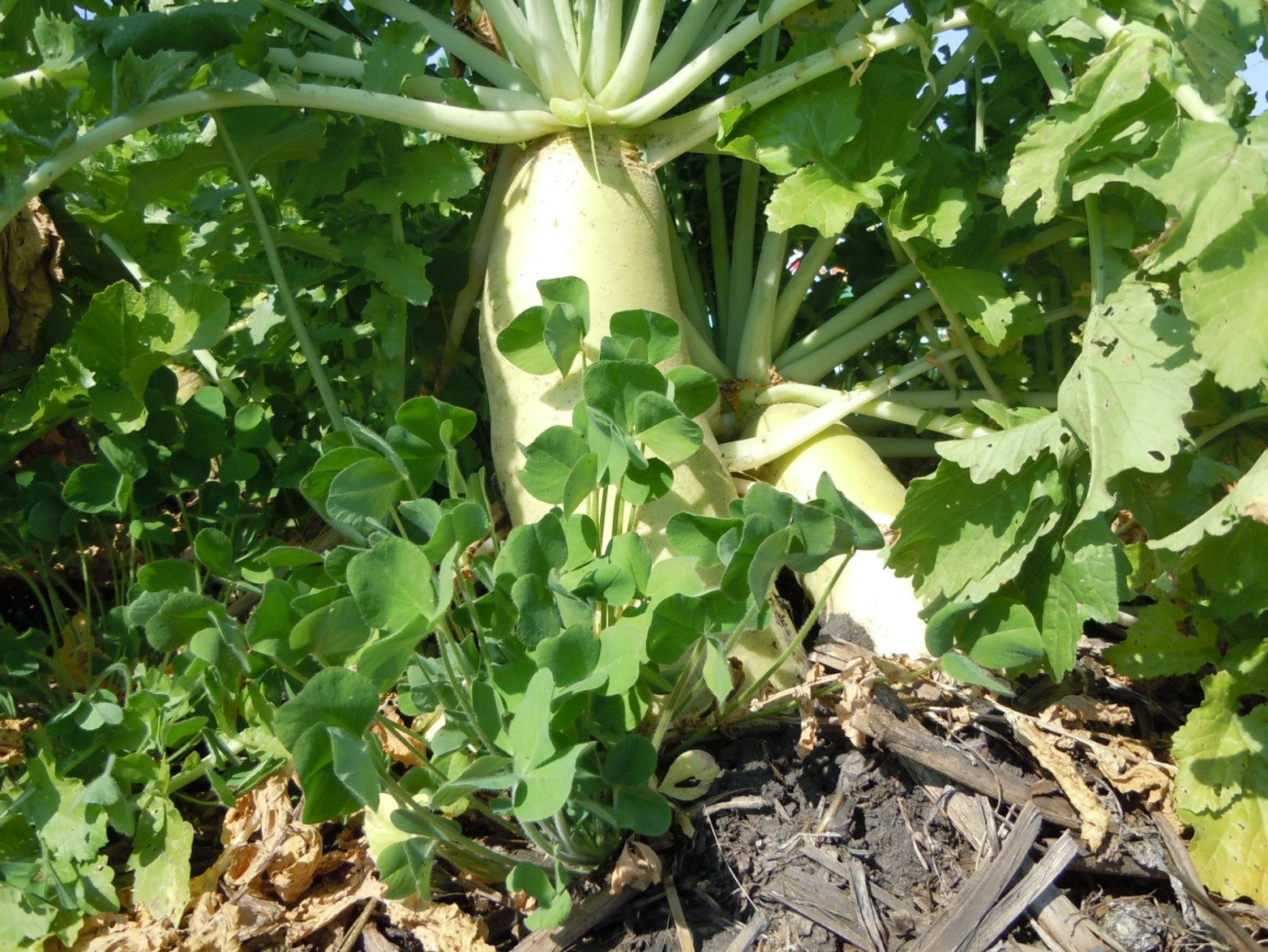

TJ and Brad requested this mix so we’d get later fall growth, deeper penetration through compacted soils (Radish vs. Pasja/Vivant), and excellent N-production from the crimson clover.
Spring barley was available and many folks in Kentucky have told me that barley makes the soil “sweet” (whatever that means). From experience, I know that soil after barley is quite mellow.
Early August Report
From what I saw on August 1 I was very impressed! As other folks in the region were planting straight oats or possibly a few were adding radishes, few seemed to share Brad’s goals.
Brad told me that he is planting these cover crops because he wants to build his soil and because he wants his 7-year-old son to have better soil to farm when he grows up and farms his place like Brad does with his father.
Here’s an interview I had with Brad and TJ.
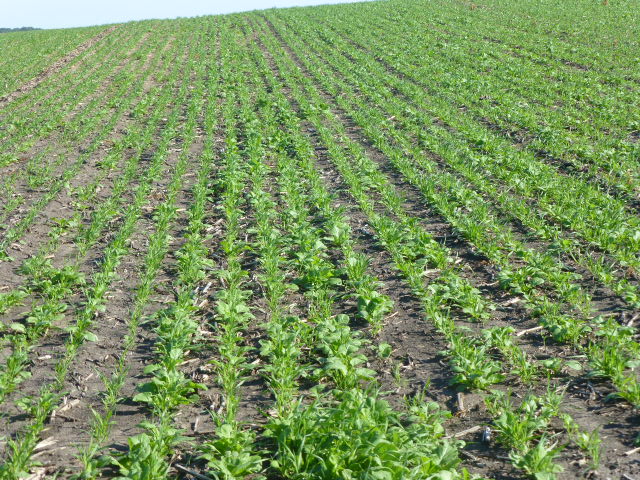
Article posted by Dave Robison, 2013.
Questions? Don’t hesitate to get in touch with us.
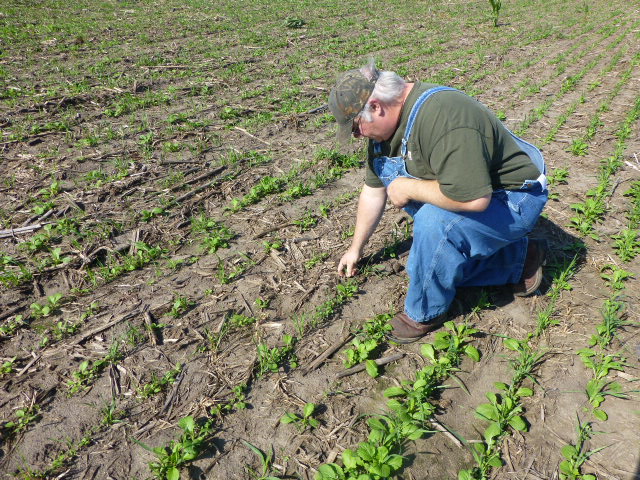
Have been air seeding some cover-crop for 3 years in late august.
As you might guess the weather did not help to get it off to an early start.
I’m located along I-90 in swMN (Jackson Co.)
Have been thinking that to get a good cover-crop, that sowing it about when the corn is waist high would be needed. I know crop insurance is and issue.
Are there some seeds that would work to start growing, remain small and resume active growth when the corn or even maybe soybeans are removed?
Dave,
That is a $64,000 question. My friend Woody from Ontario is working on this practice with different species with the help of Anne Verhallen, Soil Management Specialist (Horticultural Crops), Ontario Ministry of Agriculture, Food and Rural Affairs. I know that Woody had some success some years with radish, turnips, and also annual ryegrass. I also know that a few years ago when the corn was very short that crimson clover worked here in NE Indiana after seeding at “lay-by”.
However, I also know that there are years when no species has worked at all. I believe there is plenty left to learn in this area! I also know that aerial application in your region has worked very well the past few years when applied closer to harvest time on corn and beans.
Dave